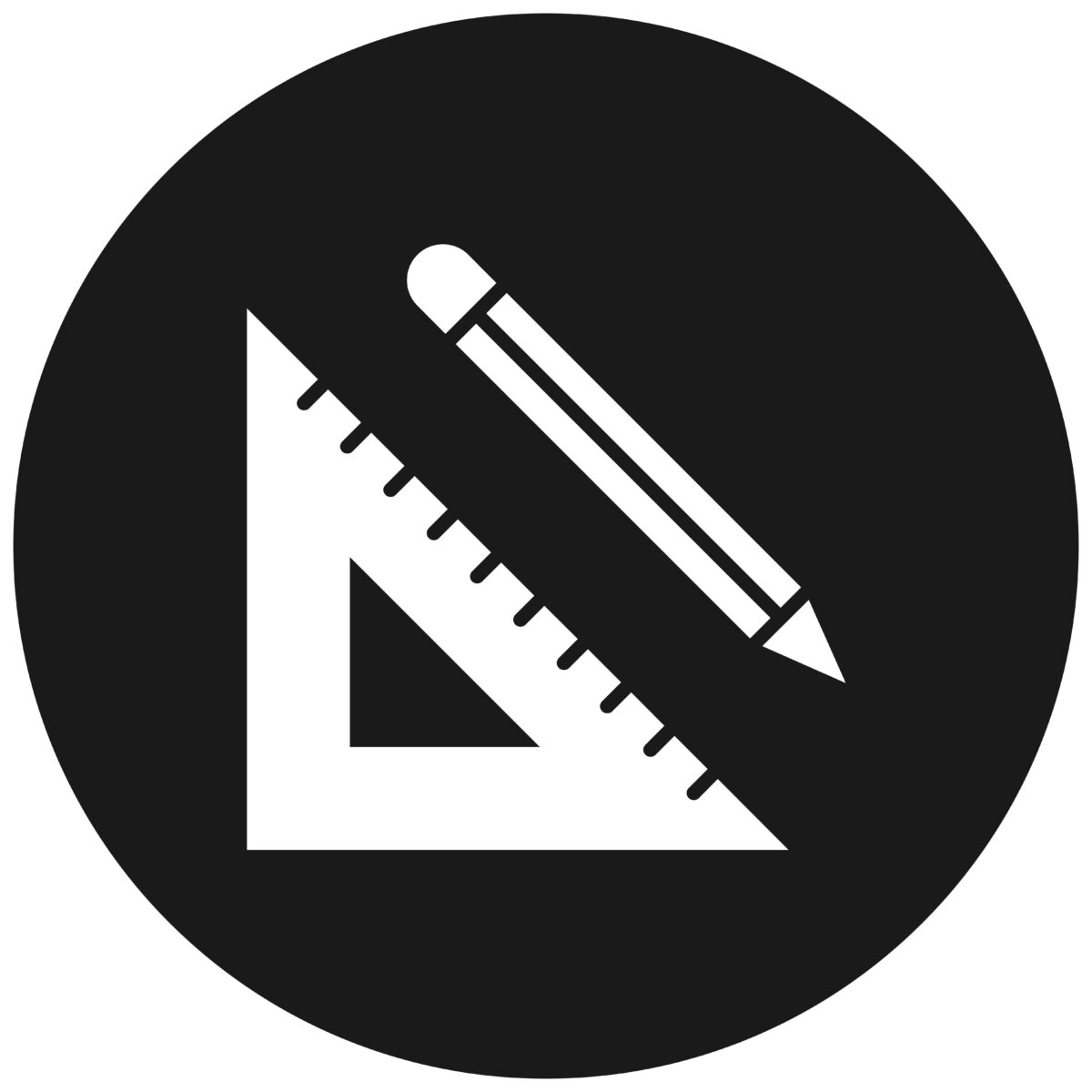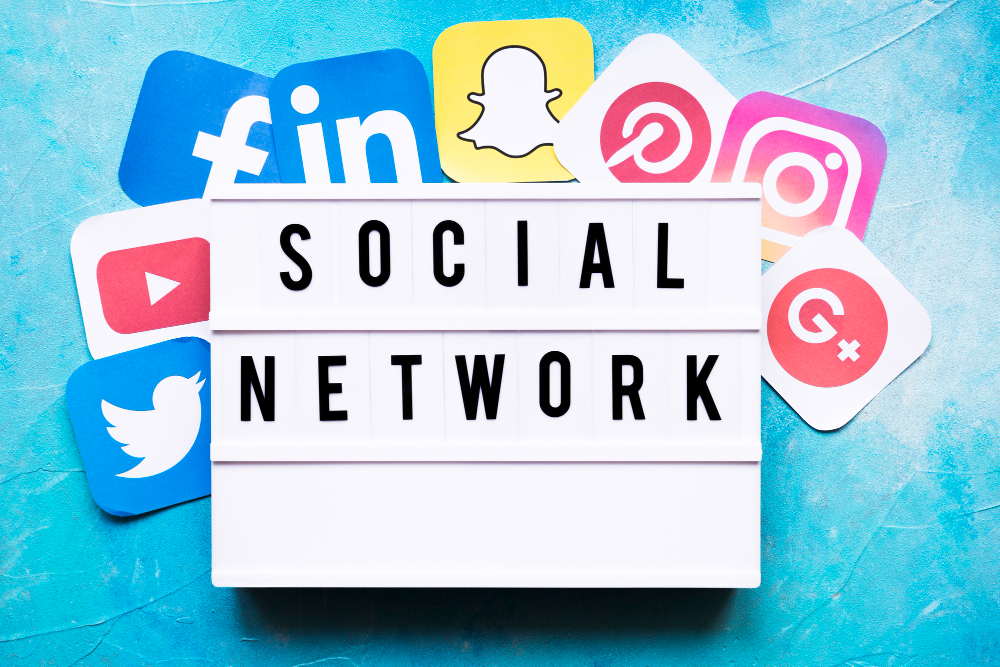
Have you ever wondered what the ideal size of a logo should be? If you don’t know, here’s your answer:
The ideal size of the logo depends upon the platform you’re accessing. This means that different platforms require different logo sizes.
However, there are some standard logo sizes for websites you may take into consideration:
- For Horizontal Layout: 250 x 150 pixels, 350 x 75 pixels, 400 x 100 pixels.
- For Vertical Layout: 160 x 160 pixels.
- For Full Banner Layout: 468 x 60 pixels.
Additionally, the standard logo dimension must be 250 pixels wide and 125 pixels high in most cases. However, you need a PNG and vector file format to adjust your logo accordingly.
In this blog post, we’ll explore logo sizes for different platforms, including Facebook, LinkedIn, Instagram, and Etsy, as well as sizes for printing stuff and email signatures.
Basics of Logo Size You Must Know For Your Business
Although the logo seems basic, you need to follow some basic rules to get the best logo for your business. Therefore, if you know the essentials of logo sizing, you can properly guide your logo maker and create a unique yet elegant design.
Have a look at the principles of logo size:
- Your Logo Must be Available in All Sizes: Your logo must be versatile, whether you want to use it on your business card or billboards. Choose a logo-friendly font that enables customers to read content about your brand message. Hire a professional logo maker and make your logo scalable so it can resize accordingly without losing its original quality.
- Select the Right Color Palette for Your Logo: Choosing the right color is mandatory for your business because the color is the key component that makes your logo more appealing, memorable, and legible. For example, consider iconic brands such as McDonald’s and Nike, where the yellow logo represents McDonald’s, which is easily recognizable, and the black tick mark logo represents the Nike brand.
Therefore, color makes your brand logo more memorable and mesmerizing and attracts your target audience. Moreover, you need variations of your logo in black and white so it can be adjustable in any tone.
- Be Aware of Your Logo’s Measurement: Logos are measured in pixels, so you must know the perfect dogo dimensions calculated in pixels and logo file format. The better resolution requires high pixels. Therefore, increase your logo pixel dimensions.
- Pick the Right Logo Format File: Generally, professional logo makers use vector file formats to adjust your logo to any size without compromising its quality, but some logo makers use raster format files. Hence, asking your logo maker for a vector file format is better.
After learning the basic principles of logo sizes, let’s explore each platform in detail so you can adjust your logo accordingly.
Logo Sizes and Dimensions for Social Media Platforms

Social media promotes your business and makes connections with your clients. That’s why your logo must look professional and mesmerize on social media. It means it needs to be optimized for every space, whether you’re using it for cover photos, banners, posts, or profile pictures.
Moreover, profile photos need to be circular or square in shape, banners are narrower and rectangular, and image posts will be square, horizontal, or vertical, depending on your preferred style.
We’ve listed the most recent and best logo sizes on social media in the table below.
| Business Profile Photo: | 180px by 180px |
| Cover Photo: | For Desktop (820px by 313pxFor Mobile (640px by 360px) |
| Posts Image: | 1200px by 630px |
| Best File Type: | .png, .jpg |
| Company’s Profile Photo: | 110px by 110px |
| Post thumbnail: | 161px by 161px |
| Posts Image: | 1080px by 1080px |
| Stories Size: | 1080px by 1920px |
| Best File Type: | .jpg |
YouTube
| Business Profile Photo: | 800px by 800px |
| Cover Photo: | 2048px by 1142px |
| Best File Type: | .jpg, .png, .bmp, .gif |
| Business Logo Image: | 300px by 300px |
| Cover Photo: | 1128px by 191px |
| Company Photos: | 900px by 600px |
| Company’s Page Images: | 1128px by 376px |
| Best File Type: | .jpg, .png, .gif |
X (Formerly Twitter):
| Business Profile Photo: | 400 x 400 px |
| Best File Type: | .jpg, .png and GIF |
Google My Business:
| Company Profile Photo: | Minimum: 250px by 250pxRecommended: 720px by 720px |
| Cover Photo: | Minimum: 250px by 250pxRecommended: 720px by 720px |
| Best File Type: | .jpg, .png |
TikTok
| Business Profile Photo: | 200px by 200px |
| Best File Type: | .jpg, .png |
Pinterest:
| Business Profile Photo: | 165px by 165px |
| Best File Type: | .jpg, .png |
Etsy:
| Business Profile Photo: | 400 x 400 px |
| Best File Type: | .jpg, .png and GIF |
Ideal Logo Sizes for Printing Stuff
Do you want to print your company logo on a T-shirt? If yes, make sure to choose the ideal logo size. There are different print applications for brochures, business cards, posters, clothes, packaging, and mugs, but it’s up to you which you want to choose and make your logo sparking.
Send the standard logo size to your printing provider to make your logo shine and be consistent across web and print applications. Have a glance at the ideal logo sizes you must consider:
| Maximum Size on a T-shirt | 14 x 15 inches |
| Maximum Size on a Mug (11 oz.) | 8.5 x 3 inches |
| Average Logo Size on Hat | 3 – 3 ½ inches |
Additionally, send your file in vector format so that the logo can be scaled up or down without losing its original quality.
How Many Pixels Should a Logo Be for Email Signatures?
Email signatures are a great place to represent your brand professionally and promote your business. They are essential, especially when you’re sending many emails.
Therefore, your signature image will be no larger than 320 pixels wide and 70 to 100 pixels high. Most mobile devices are generally between 320 and 500 pixels wide, so your logo will display well on all devices.
Remember, the file must be in PNG format that doesn’t exceed 10KB.
Logo Sizes For Website
The Logo on your website is the identity of your business that makes a good connection between you and your customers. Without a logo, you will be disconnected, and customers won’t recognize or even memorize your brand next time. Hence, it is mandatory to use a logo, whether it is in your header, also known as a navigational bar, or favicons, a small icon in the search bar beside your URL.
Moreover, your logo must be under 200 KB to easily be loaded on the website. Otherwise, heavier files take a lot of time to load, and customers will never have to wait for them. Therefore, you lose your potential customers.
For Website Header
A website header logo is displayed in the browser window’s upper left corner or appears in the top centre of your page. These images are usually small and rectangular. Website logo sizes vary from platform to platform. It depends on which framework you’re building or which exact dimensions suit your logo site.
However, there are some standard measurements of websites that you can consider for your logo. Have a look at some logo dimensions:
| For vertical Layout | 160 x 160 pixels |
| For Horizontal Layout | 250 x 150 pixels350 x 75 pixels400 x 100 pixels |
However, the average height of a website logo ranges between 20px and 30px, while the width depends on the length of your brand name.
For Favicons Logo
A favicon is a small logo displayed in your browser tab to represent a specific website you’re exploring. Your customers will recognize you with the help of the favicon icon. You must consider a professional logo maker that provides a favicon logo file along with a transparent background.
But the question that comes to your mind is: What dimensions should a favicon logo be? Here’s your answer:
| Standard Favicons Sizes: | 16 x 16 px -most used 32 x 32 px 48 x 48 px |
| Best File Type: | .jpg, .png |
Key Takeaways of Logo Sizes:
Since we’ve different size options for different platforms. Therefore, there is no exact answer about the ideal logo size. However, we’ve gathered some helpful guidelines that you must consider:
- The average vertical layout is 160 x 160 px and the average horizontal layout would be 250 x 150 pixels, 350 x 75 pixels, 400 x 100 pixels
- The average height of a website logo ranges between 20 pixels and 30 pixels, while the width depends on the name of the brand’s length.
- The average logo dimensions for a web page are 250 x 150 pixels.
Why Do Logo Sizes Matter?
It matters because the right logo size makes your brand visibility clearer and more presentable to your target audience. This way, you represent your logo in the best quality with a convenient message to any platform.
Therefore, your logo must be optimized according to the platform which you’re using.
The Bottom Line
Hopefully, this guide gave you complete insight into each platform’s logo size. You have a had vast knowledge of your logo sizes. Keep this thing in mind: you also need to create a unique, eye-catching, and elegant logo design for your brand.
Hire a professional logo maker and create a creative logo that can be scaled down in any size and accessed easily everywhere. In this way, you can represent your brand across the world effectively.

Vince Logo Design is a distinguished digital marketing agency, specializing in crafting compelling brand identities and optimizing online presence. We are your partners in creating impactful digital strategies that drive results.
Get in touch.Get Free Consultancy
Fill the following form and receive a guaranteed response within 48 hours.
We have worked with world's leading brands











